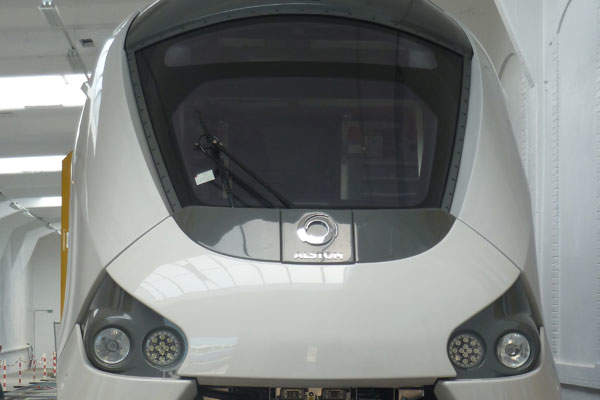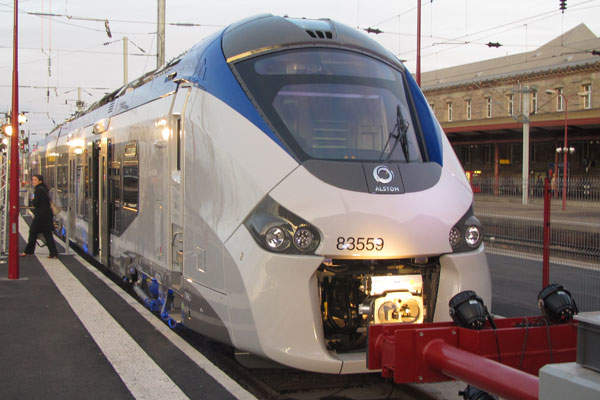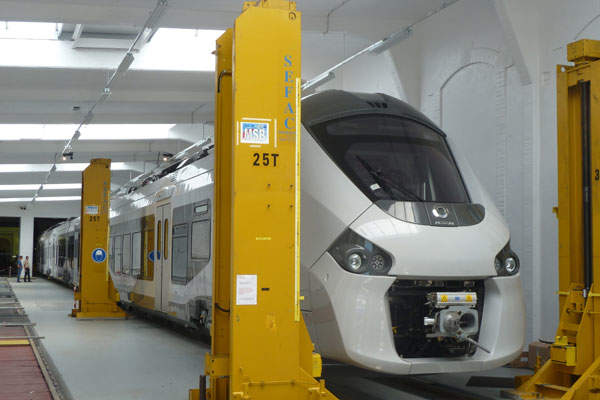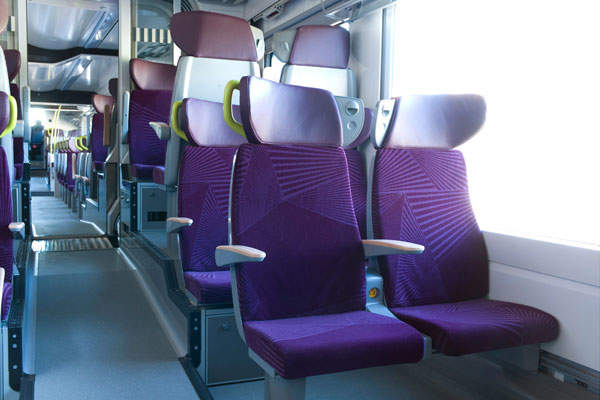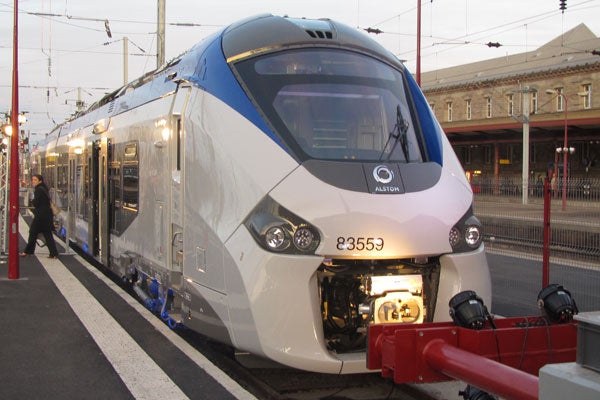
Régiolis is a next-generation regional train developed by Alstom Transport. The train is derived from Coradia Polyvalent regional trains. The new trains aim to offer reliability and comfort for passengers, while delivering low operational costs.
Alstom received orders for 182 Régiolis trains from 12 French regions as part of a contract signed with SNCF in 2009. The first train set was delivered to the Aquitaine Region in July 2013 and the first train to the Lower Normandy region was delivered in December.. Alstom plans to deliver 100 Régiolis trains by late 2014.
The fleet of Régiolis trains has run for 350,000km to conclude dynamic test phase. The Commercial Operation Authorisation (AMEC) from French Rail Safety Public Authority (EPSF) was received in March 2014 allowing the trains to enter into service in April 2014.
Régiolis regional trains are designed, produced and assembled at Alstom’s sites in Reichshoffen (design and assembly), Ornans (motors), Le Creusot (railcars), Tarbes (traction systems) and Villeurbanne (on-board computer systems).
Régiolis design features
The Régiolis regional trains feature an articulated architecture integrating bogies amidst cars and a permanent magnet motor. The train sets were developed using advanced reusable components for saving power consumption and reducing total cost of ownership. The innovative design meets the requirements of customers and satisfies different passenger groups.
The bogies are placed at the ends of the train to minimise the vibration and noise experienced by passengers. The equipment is installed on the roof to create additional internal space for the passengers and luggage. The acoustic comfort inside the trains is enhanced by removing most technical units and other sources of vibration.
Related project
Alstom Coradia Regional Trains, France
The Coradia family of regional trains, manufactured by Alstom Transport, are high-performance rolling stock offered in various configurations suitable for diverse requirements.
The Régiolis range of trains is available in three lengths. The 110m-long train includes six cars, while 72m and 56m-long trains include four and three cars respectively. Régiolis trains are offered in three types of configurations, suburban, regional and intercity. These configurations are designed to fulfil the specific requirements adapted to the types of routes served.
The technical equipment on the roof and other key equipment aboard the Régiolis train sets are easily accessible enabling optimised maintenance. The state-of-the-art technologies used in the trains offer advantages in terms of safety, comfort and space.
Régiolis regional train interiors and facilities
The modular architecture of Régiolis allows the integration of train interiors according to the interest of each region. The railcars feature seating, multi-activity areas such as bike racks and ski racks, passenger services, work areas and recreational spaces for families.
Régiolis is the first regional low-floor train in France. The low-floor cars allow easy movement and access for passengers onboard. The internal space is designed to offer complete visibility from one end of the train to the other.
The information system screens installed in the railcars display traffic conditions in real time. The systems can be optionally equipped to provide information on the weather and local tourist attractions. This information will be announced through an audio track for visually impaired passengers.
Régiolis regional trains offer a range of devices to enhance safety and security. Trains can be equipped with video surveillance and decision support systems for assisting drivers and control centres. The intercom system installed in bogies allows passengers to contact the driver in case of emergency.
Régiolis trains propulsion
Régiolis trains are powered by bimodal (diesel/electric) or electric engines. The permanent magnet synchronous motors offer superior power-to-weight ratio. The four-car train develops a unique special power of 1kW/kg, or 20% more power than that of the last generation. The new generation of engines can also recover the energy produced during braking.
The energy consumption is further reduced due to the low weight of the trains. The redundancy of the propulsion ensures the availability of trains for a maximum period of time.

